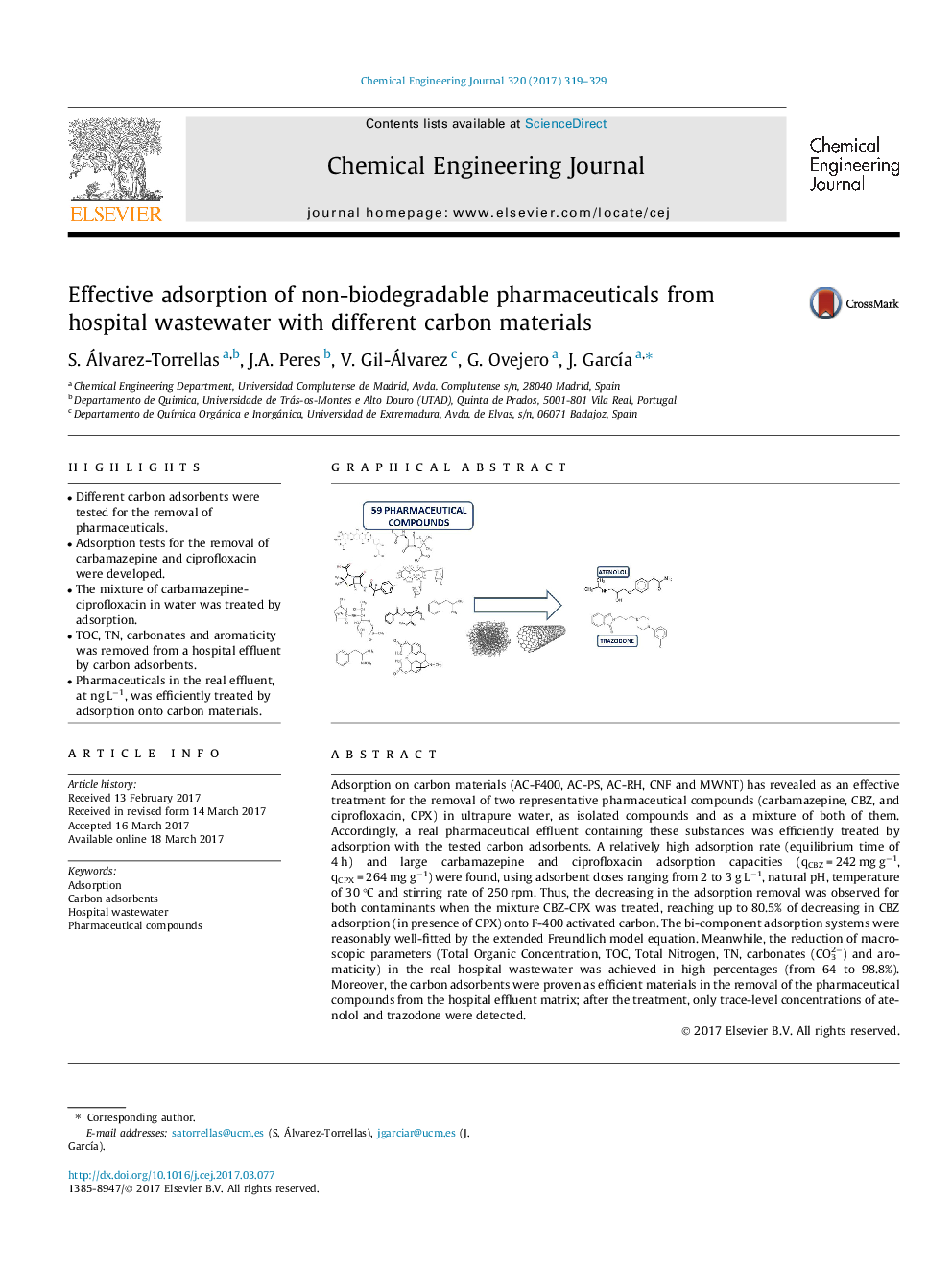| کد مقاله | کد نشریه | سال انتشار | مقاله انگلیسی | نسخه تمام متن |
|---|---|---|---|---|
| 6465945 | 1422958 | 2017 | 11 صفحه PDF | دانلود رایگان |
- Different carbon adsorbents were tested for the removal of pharmaceuticals.
- Adsorption tests for the removal of carbamazepine and ciprofloxacin were developed.
- The mixture of carbamazepine-ciprofloxacin in water was treated by adsorption.
- TOC, TN, carbonates and aromaticity was removed from a hospital effluent by carbon adsorbents.
- Pharmaceuticals in the real effluent, at ng Lâ1, was efficiently treated by adsorption onto carbon materials.
Adsorption on carbon materials (AC-F400, AC-PS, AC-RH, CNF and MWNT) has revealed as an effective treatment for the removal of two representative pharmaceutical compounds (carbamazepine, CBZ, and ciprofloxacin, CPX) in ultrapure water, as isolated compounds and as a mixture of both of them. Accordingly, a real pharmaceutical effluent containing these substances was efficiently treated by adsorption with the tested carbon adsorbents. A relatively high adsorption rate (equilibrium time of 4 h) and large carbamazepine and ciprofloxacin adsorption capacities (qCBZ = 242 mg gâ1, qCPX = 264 mg gâ1) were found, using adsorbent doses ranging from 2 to 3 g Lâ1, natural pH, temperature of 30 °C and stirring rate of 250 rpm. Thus, the decreasing in the adsorption removal was observed for both contaminants when the mixture CBZ-CPX was treated, reaching up to 80.5% of decreasing in CBZ adsorption (in presence of CPX) onto F-400 activated carbon. The bi-component adsorption systems were reasonably well-fitted by the extended Freundlich model equation. Meanwhile, the reduction of macroscopic parameters (Total Organic Concentration, TOC, Total Nitrogen, TN, carbonates (CO32â) and aromaticity) in the real hospital wastewater was achieved in high percentages (from 64 to 98.8%). Moreover, the carbon adsorbents were proven as efficient materials in the removal of the pharmaceutical compounds from the hospital effluent matrix; after the treatment, only trace-level concentrations of atenolol and trazodone were detected.
68
Journal: Chemical Engineering Journal - Volume 320, 15 July 2017, Pages 319-329
